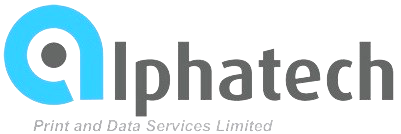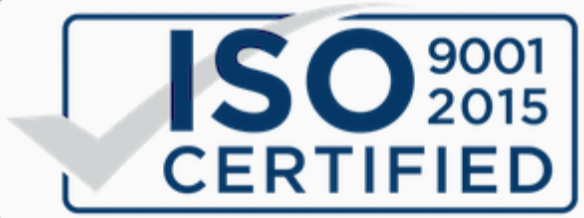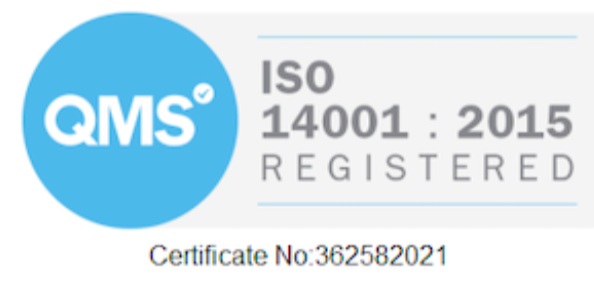
Are you tired of sifting through piles of paper to locate that one crucial document? Imagine a world where you can retrieve any file within seconds, streamline your workflows, and collaborate effortlessly with your team. Digital document management solutions can turn this vision into reality, offering businesses in the UK a pathway to greater efficiency and reduced paper usage.
Ever wondered how digital document management could revolutionise your business operations?
Digital document management reduces the time spent searching for files
Automated workflows eliminate manual, repetitive tasks
Remote access and collaboration tools enhance team productivity
Reduced paper usage lowers costs and environmental impact
Clear strategies are essential for successful implementation
Digital document management is more than just a trend; it’s a game-changer for businesses aiming to streamline operations and enhance efficiency. Let’s dive into the myriad benefits it offers.
Digital document management significantly reduces the time spent searching for files. Instead of rummaging through filing cabinets, you can use advanced search functionalities to locate documents in seconds. By automating processes, businesses eliminate manual, repetitive tasks, enabling employees to focus on more strategic activities.
Automated workflows also play a pivotal role in boosting productivity. For instance, a good document management system can route documents to the right team members for approval without any manual intervention. This not only saves time but also reduces errors. Moreover, centralised storage ensures that documents are easily accessible to authorised personnel, further enhancing workflow management and overall organisational efficiency.
One of the standout features of digital document management is improved accessibility. With digital solutions, your team can access documents remotely, facilitating flexible working arrangements. This is particularly beneficial in today’s hybrid work environments.
Furthermore, collaboration tools enable multiple users to work on the same document simultaneously. This real-time collaboration ensures that everyone is on the same page, literally and figuratively. Version control features keep track of changes and ensure that everyone is working on the most recent document. Platforms like SharePoint offer robust collaboration capabilities, making it easier for teams to stay aligned and informed.
Embracing digital document management can drastically cut down on paper consumption. This not only lowers office supply costs but also reduces the physical storage space required for documents. By moving away from paper processes, businesses can make a positive environmental impact.
Companies that adopt environmentally-friendly practices often see enhanced reputational benefits. Customers and stakeholders increasingly value sustainability efforts, making this a strategic advantage. By reducing paper usage, you’re not just saving money; you’re also contributing to a greener planet.
Implementing a digital document management system is not a one-size-fits-all approach. It requires careful planning and clear strategies to be effective.
The first step in implementing a digital document management system is to assess your current processes. Conducting a thorough audit helps identify inefficiencies in existing workflows. By evaluating these workflows, you can determine areas that need improvement.
Gathering feedback from staff provides valuable insights into pain points and challenges they face with current manual processes. Analysing document usage patterns can also inform better management strategies. Understanding how digital document management works and its capabilities will guide you in making informed decisions.
Setting clear objectives is crucial for the successful implementation of any system. Clear objectives guide the implementation process and help measure success. Specific goals ensure that the new system aligns with broader business strategies.
Defined targets help track progress and make necessary adjustments along the way. Realistic timelines keep the project on schedule and within budget. Whether it’s integrating with an enterprise resource planning system or improving the handling of business documents, having well-defined objectives is key.
Training and onboarding are essential components of a successful digital document management implementation. Comprehensive training ensures that staff understand new systems and processes. Onboarding sessions help employees adapt to digital tools quickly, which is crucial for a smooth transition.
Continuous support addresses any issues that may arise and reinforces learning. Engaging training materials make the learning process more effective, helping employees to customise workflows to suit their needs. Effective employee management during this phase can make or break the success of your digital transformation.
Choosing the right document management software is a critical decision that can impact the efficiency and effectiveness of your document management processes.
When evaluating document management software, it’s essential to consider its features and capabilities. Key features to look for include document capture, indexing, and retrieval. Efficient document capture tools digitise physical documents quickly, while advanced indexing categorises them for easy retrieval.
A user-friendly interface is crucial for user adoption and satisfaction. Customisable options allow you to tailor the software to meet specific business needs. Robust security features protect sensitive information, ensuring that your documents are safe from unauthorised access.
Scalability is another important factor to consider. The software should be able to grow with your business. Integration capabilities are equally important, as they help streamline existing workflows. Compatibility with current tools prevents disruptions during the transition phase.
Flexible systems can adapt to future technological advancements, ensuring that your investment remains valuable in the long run. Cloud document management solutions often offer better scalability and integration options, making them a popular choice for many businesses.
Budgeting and cost analysis are essential steps in selecting the right document management software. Initial costs should be weighed against long-term savings. Subscription models often provide predictable ongoing expenses, making it easier to manage budgets.
ROI calculations can justify the investment to stakeholders. However, it’s important to consider hidden costs like training and maintenance. By conducting a thorough budgeting and cost analysis, you can make a well-informed decision that aligns with your financial goals.
An effective document management system is characterised by several key features that enhance its functionality and user experience.
Efficient document capture tools are essential for digitising physical documents. High-quality scanners and OCR technology convert scanned documents into editable text, making them easier to work with. Advanced indexing categorises documents for easy retrieval, saving time and effort.
Automated metadata tagging enhances searchability, allowing users to find documents quickly. A well-organised digital repository ensures that all documents are stored systematically, making them easily accessible when needed.
Version control is crucial for maintaining document integrity. It tracks changes and ensures that the most recent version is always available. Audit trails record all document interactions, providing a clear history of changes and compliance with regulations.
Historical records offer valuable insights into the document’s evolution, helping you understand its context and changes over time. User permissions control access to sensitive documents, ensuring that only authorised personnel can make changes.
Advanced search options are a must-have feature in any document management system. They allow users to locate documents swiftly, saving time and effort. Filters and tags help narrow down search results, making it easier to find specific documents.
Full-text search capabilities enable users to find specific content within documents. An intuitive interface makes the search process user-friendly, ensuring that everyone can use the system effectively. Platforms like Google Drive offer robust content services that enhance search and retrieval functionality.
Integrating a document management system with existing workflows requires careful planning and execution to minimise disruptions and maximise efficiency.
Identifying key integration points is the first step in this process. These points streamline data flow between systems, enhancing overall process efficiency. Critical touchpoints need to be identified to prevent workflow disruptions.
Collaboration with IT ensures smooth implementation and addresses any technical challenges that may arise. By understanding the content management software and its capabilities, you can ensure a seamless integration process.
Compatibility with existing systems is crucial for a smooth transition. Compatibility checks prevent technical issues during integration, minimising downtime and productivity loss. The data from existing systems must be easily migrated to the new system.
Regular updates and maintenance are necessary to keep the system compatible with evolving tools and technologies. Ensuring compatibility helps maintain a seamless workflow and enhances overall productivity.
Customising workflows to match specific business requirements is essential for seamless integration. Tailored solutions improve user experience and efficiency. Flexibility in workflows allows for future changes and adaptations.
User feedback is invaluable in refining and optimising workflows. By continuously improving the system based on user input, you can create a more effective and user-friendly document management solution.
Security and compliance are critical aspects of any document management system. Ensuring that your system meets these requirements is essential for protecting sensitive information and avoiding legal issues.
Data encryption is a fundamental security measure that ensures sensitive information remains secure. Access control restricts document access to authorised users, adding an extra layer of protection.
Multi-factor authentication provides additional security, making it harder for unauthorised users to gain access. Regular security audits help identify and mitigate potential risks, ensuring that your documents are always protected.
Compliance with data protection regulations like GDPR is crucial for any document management system. Compliance features such as audit trails and data retention policies help meet these requirements.
Regular training ensures that staff understand compliance requirements and adhere to them. Non-compliance risks include hefty fines and reputational damage, making it essential to prioritise compliance in your document management strategy.
Robust disaster recovery plans are essential for protecting against data loss. Regular backups ensure that data can be restored quickly in case of any issues. Offsite storage adds an extra layer of protection, ensuring that your data is safe even in the event of a disaster.
Regular testing of recovery plans ensures their effectiveness, giving you peace of mind that your data is always protected. By prioritising disaster recovery and backup plans, you can safeguard your business against data loss and ensure continuous operations.
Transitioning from paper-based to digital document management requires careful planning and execution to minimise disruptions and maximise benefits.
The first step in this transition is scanning and digitising paper documents. High-quality scanners efficiently convert paper documents into digital format. OCR technology further enhances this process by converting scanned documents into searchable text.
Batch processing accelerates the digitisation process, making it more efficient. Quality control ensures that digitised documents are accurate and reliable, providing a solid foundation for your digital document management system.
Establishing logical folder structures is crucial for organising digital documents. Consistent naming conventions simplify document retrieval, making it easier to find what you’re looking for.
Metadata tagging enhances searchability, allowing users to locate documents quickly. Clear guidelines ensure uniformity across the organisation, creating a cohesive and efficient digital filing system.
A phased approach to transitioning minimises disruption and allows for adjustments and improvements along the way. Pilot projects test new systems before full implementation, helping identify any issues early on.
Incremental changes make the transition more manageable and less overwhelming for staff. Regular progress reviews ensure that the transition stays on track and meets its goals, making the process smoother and more effective.
Cloud-based document management solutions offer numerous benefits, making them an attractive option for businesses looking to enhance efficiency and flexibility.
Cloud solutions offer scalable storage options, allowing you to expand as your business grows. Remote access enables flexible working arrangements, making it easier for employees to work from anywhere.
Automatic updates ensure that the system is always up-to-date, reducing the need for manual maintenance. Cloud storage also reduces the need for on-premises infrastructure, saving costs and resources.
Choosing the right cloud storage provider is crucial for maximising the benefits of cloud-based document management. Reputable providers offer robust security measures, protecting your data from unauthorised access.
Service level agreements guarantee uptime and support, ensuring that your system is always available when you need it. Provider reputation and reviews can inform your decision-making process, helping you choose a provider that meets your needs and budget constraints.
Data migration plans are essential for a smooth transition to the cloud. Encryption protects data during transfer and storage, ensuring that your information remains secure.
Regular security audits maintain data integrity, identifying and addressing potential risks. Backup solutions prevent data loss in the cloud, providing peace of mind and ensuring continuous operations.
Organising and managing digital content effectively is crucial for maximising the benefits of your document management system.
Logical folder structures streamline document organisation, making it easier to find and manage documents. Consistent naming conventions facilitate easy retrieval, ensuring that everyone can locate the documents they need quickly.
Clear guidelines ensure uniformity across the organisation, creating a cohesive and efficient system. Regular reviews keep the system organised and efficient, helping you maintain a high level of productivity.
Metadata tagging enhances document searchability, making it easier to find specific documents. Standardised tags ensure consistency across the organisation, creating a unified and efficient system.
User training ensures that employees use metadata effectively, maximising its benefits. Regular reviews of tagging practices maintain efficiency, helping you keep the system organised and user-friendly.
Regular maintenance is essential for keeping your document management system running smoothly. Periodic reviews identify areas for improvement, helping you optimise the system continuously.
User feedback informs necessary adjustments, ensuring that the system meets the needs of your employees. Continuous updates keep the system aligned with business needs, helping you maintain a high level of productivity and efficiency.
In conclusion, digital document management solutions offer numerous benefits, from streamlining processes and improving accessibility to reducing paper usage and enhancing security. By implementing clear strategies and choosing the right software, businesses can maximise these benefits and achieve greater efficiency.
Do you think your business is ready to make the leap to a digital document management system? What challenges do you anticipate, and how do you plan to address them? Share your thoughts and experiences in the comments below!
Digital document management is the process of storing, organizing, and managing electronic files and documents in a centralized system. It involves the use of software to capture, store, retrieve, and share documents digitally, eliminating the need for physical paper documents.
A Digital Document Management System (DMS) is used to streamline document workflows, improve collaboration, increase productivity, and reduce paper-based processes. It helps businesses to store documents securely, track document versions, automate document approval processes, and ensure compliance with regulatory requirements.
DMS filing refers to the process of organizing and categorizing digital documents within a Document Management System. It involves creating folders, subfolders, and metadata tags to classify documents based on their content, purpose, and importance. This filing system makes it easier to locate and retrieve documents quickly when needed.
In a business context, DMS stands for Document Management System. It refers to software solutions that help organizations to digitize, store, manage, and retrieve documents efficiently. DMS in business enables improved information sharing, better decision-making, enhanced document security, and increased operational efficiency. By implementing a DMS, businesses can reduce costs associated with paper-based processes and improve overall productivity.

We provide data transformation services, client portals, document hosting, document retrieval, document emailing, e-billing, printing & advertising mail.

